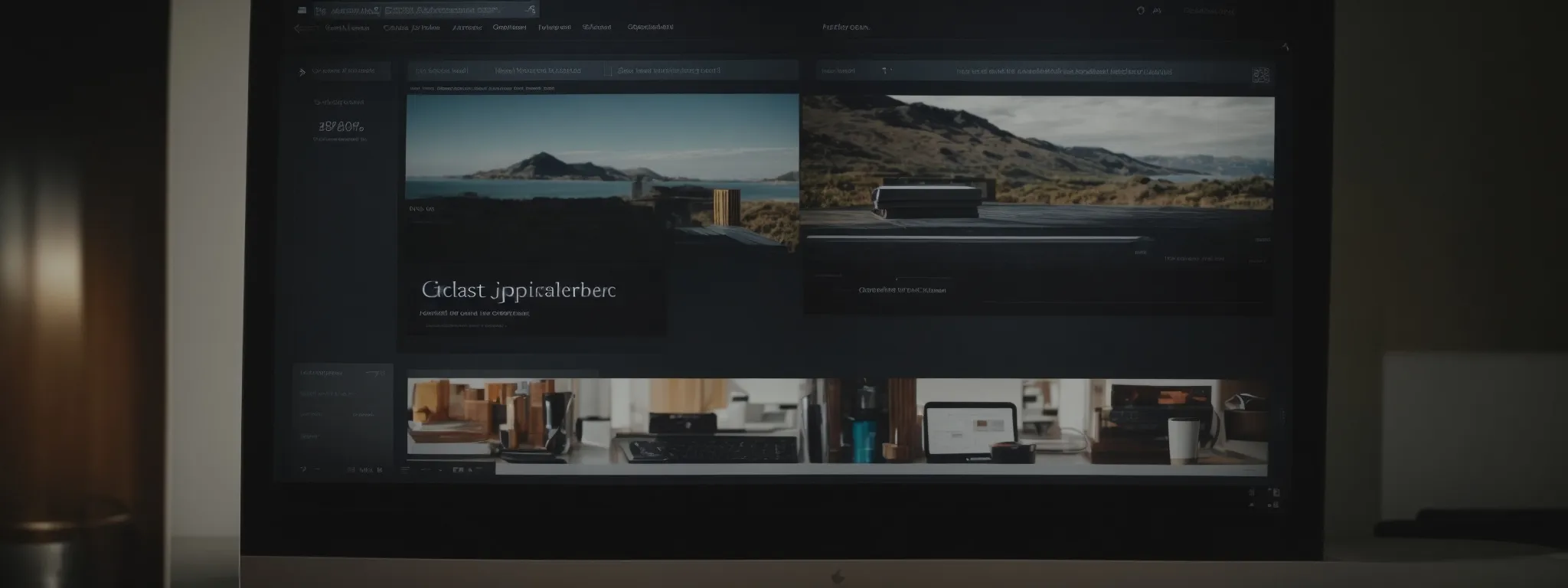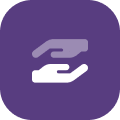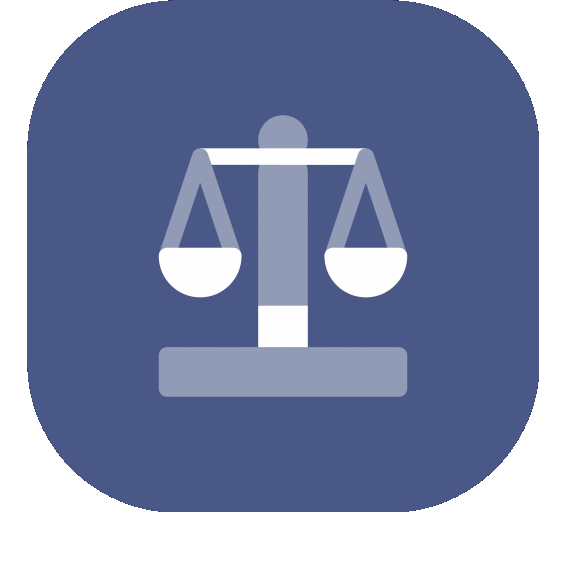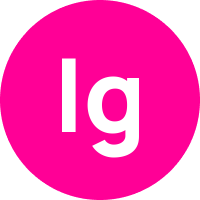Image SEO: Strategies for Visibility
Maximizing Your Images for Better Search Engine Rankings In the expansive world of SEO, images often hold untapped potential for enhancing search engine rankings. Crafting a strategy […]
Maximizing Your Images for Better Search Engine Rankings
In the expansive world of SEO, images often hold untapped potential for enhancing search engine rankings.
Crafting a strategy that includes SEO for images not only benefits the visibility of the content within search results but also enriches the user experience, ultimately driving more traffic to a website.
With a focus on the intricacies of file formats, naming conventions, and technical optimizations, businesses can significantly bolster their online presence.
This article serves as a guide to mastering image SEO practices that seamlessly interweave with LinkGraph’s comprehensive SEO services.
Keep reading to discover how advanced tools and strategies, including SearchAtlas SEO software, can transform your images into powerful assets for digital success.
Key Takeaways
- Image SEO Is Crucial for Enhancing Site Visibility and Engagement Through Size Adjustments, Proper Formatting, and Tagging
- Alt Text, File Names, and Structured Data Are Significant Elements That Improve a Website’s Indexability and Ranking in Search Results
- Responsive Design Is Essential for Images to Maintain User Engagement Across Various Devices, a Key Factor in Search Engine Rankings
- Incorporating Structured Data Through Schema Markup Elevates Image Discoverability and Provides Detailed Context to Search Engines
- Regular Updates to Image Sitemaps Are Vital for Accurate Search Engine Indexing, Impacting the Website’s SEO Effectiveness
Understanding the Importance of Image SEO

In the quest to ascend the echelons of search engine rankings, digital marketing professionals often emphasize textual content, yet neglect the potent influence that images hold in this arena.
The strategic optimization of images is not a superfluous add-on but a pivotal component of a holistic Search Engine Optimization approach.
Understanding the fundamentals of image SEO is indispensable in improving site visibility and user engagement.
As images become an increasingly integral part of content strategies, their role in enhancing search rankings cannot be overstated.
By incorporating best practices for image optimization—inclusive of size adjustments, format selection, and meticulous tagging—brands are equipped to leverage visual assets that not only captivate visitors but also communicate relevance and quality to search engines.
Grasp the Basics of Image Optimization
Mastering the nuances of image SEO begins with meticulous attention to image file names. A descriptive, keyword-rich image file name becomes the first indicator to search engines of the subject matter within, serving as a foundational step to improve search result visibility.
Ensuring the appropriate selection of image file size and format is a critical yet often overlooked aspect of SEO for images. By optimizing image file size without sacrificing quality, one can significantly improve page speed, thereby enhancing the user experience and contributing positively to search engine rankings.
Why Images Affect Search Engine Rankings
Images command a unique capacity to bolster a website’s visibility in image search results, directly influencing how search engines interpret and rank web page content. Quality images, optimized with relevant alt text and file names, enrich the content’s context, acting as invaluable catalysts to elevate search engine rankings.
Moreover, images possess the potential to enhance user experience, a critical metric that search engines prioritize. Imagery that resonates with the visitor aids in reducing bounce rates and increasing the time users spend on a site—indirect, yet potent factors impacting a site’s search engine stature.
The Role of Images in SEO Strategy
Images serve as a silent storyteller on your website, encapsulating product features and brand ethos with a single glimpse. They form an integral piece of LinkGraph’s SEO content strategy, ensuring that every visual element appeals not only to users but also to search engines that seek to understand and index content effectively.
LinkGraph recognizes the profound impact that a well-crafted image can have on both visitor engagement and SEO. By integrating SEO best practices, such as effective alt tags, image sitemaps, and Careful Attention to File Type and Image Quality, images transform into powerful allies in the pursuit of improved search engine rankings.
| SEO Component | Action | Benefit |
|---|---|---|
| Alt Text | Incorporate descriptive, keyword-focused alternative text. | Enhances content relevancy for search engines; aids in image search visibility. |
| Image Sitemaps | Create and submit sitemaps that include image information. | Assists search engines in locating and indexing images more efficiently. |
| File Type & Quality | Optimize image file type (e.g., JPG, WebP) and maintain quality with SEO image optimizer tools. | Boosts page load speed, a ranking factor; preserves image clarity for user experience. |
Selecting the Right File Format for Images

In an environment where every second counts towards retaining the interest of a visitor, the selection of the appropriate image format becomes a strategic pivot in the grand scheme of SEO.
Marketers and webmasters deliberate between JPEG, PNG, and WebP file types, each with distinctive advantages in terms of loading speed, quality, and compression.
The optimal format choice varies, contingent upon the specific demands of the web page and the desired user experience.
This choice is not merely a technicality but a significant determinant of how efficiently a site operates, with direct implications on both site speed and the visual fidelity of the images presented to users and search engines alike.
JPEG vs PNG vs WebP: Which to Choose
Deciphering the intricacies of image formats demands a balance between compression and clarity, where JPEG stands out for its capacity to significantly reduce file sizes, making it a popular choice for photographs and complex images. However, the art of selecting whether to use JPEG lies in one’s tolerance for slight quality loss due to compression, as search engines favor swift-loading pages, which can enhance a site’s ranking.
In contrast, PNGs are prized for their lossless compression, preserving image quality at the cost of larger file sizes, suitable for detailed graphics with transparency requirements. Meanwhile, WebP emerges as a robust contender, boasting strong compression ratios and speed, challenging traditional formats by delivering high-quality images at diminished file sizes, thereby potentially contributing to improved search engine result placement and user satisfaction.
Impact of File Format on Loading Speed
When it comes to page performance, the influence of image file format is a critical consideration. Utilizing formats such as WebP, known for its efficient compression, means that images maintain a high level of quality while contributing to reduced page sizes and, consequently, faster loading times.
Site speed serves as a pivotal element in search engine algorithms, with faster-loading pages generally receiving preferential treatment in rankings. Therefore, the judicious selection of image formats suited to optimal loading speed without compromising image integrity remains a cornerstone of savvy SEO strategy.
Quality and Compression Considerations
The interplay between image quality and compression is a delicate balance, pivotal to maintaining a website’s aesthetic appeal while optimizing for speed and performance. Professional online entities, such as LinkGraph’s SEO services, underscore the significance of utilizing advanced SEO image optimizer tools to strike this balance, ensuring images are both visually engaging and efficiently compressed to enhance site performance.
As a ranking factor, the optimization of image file size through judicious compression techniques can directly impact search engine rankings, contributing to a swift and responsive user interface. By considering how different compression levels affect image quality, brands can effectively position their content in search engine results while providing a seamless visual experience for the end user.
Effective Practices for Image File Naming

In the domain of search engine optimization, the fine art of naming image files is frequently overlooked, yet it stands as a silent sentinel influencing a website’s visibility online.
Approaching this task with intentionality means more than merely selecting a coherent title; it involves the strategic inclusion of targeted keywords that echo throughout the site’s content and architecture.
Skilled practitioners at LinkGraph’s SEO services understand that structuring file names for optimal indexing is a subtle yet potent technique to catch the discerning eye of search algorithms, ensuring each image contributes to the overarching goal of superior rankings.
Therefore, it is crucial to sidestep common naming errors that can obscure a website’s potential reach, laying the groundwork for a robust foundation in an enterprise’s quest for online prominence.
Include Targeted Keywords in File Names
Infusing image filenames with targeted keywords is an astute strategy that serves a dual purpose: it clarifies the content for the user and signals relevance to search engines. Such foresight in nomenclature endows each image with the potential to act as a silent herald of the content’s theme, beckoning the attention of search algorithms with every pixel.
LinkGraph’s expert SEO services harness this approach, meticulously crafting filenames that resonate with both the subject matter and strategic keywords. This technique positions images to contribute meaningfully to the collective SEO effort, raising the visibility of web pages in the digital tapestry of search results.
Structure File Names for Better Indexing
Optimal structuring of image file names goes beyond mere organization—it is a calculated measure aimed at enhancing a page’s indexability by search engines. By crafting concise, descriptive, and SEO-friendly names, images are indexed more accurately and appear more prominently in image search results.
Naming conventions should follow a logical, readable format that includes relevant keywords without overstuffing. Adherence to such best practices not only assists search engines in understanding the content but also organizes the site’s image gallery in a way that is accessible to webmasters and editors alike.
| Aspect of Image Naming | Best Practice | SEO Benefit |
|---|---|---|
| Descriptiveness | Use clear, relevant descriptions that reflect the image content. | Improves relevance and context for search engine indexing. |
| Keyword Integration | Include pertinent keywords strategically within the file name. | Enhances visibility in search results; drives targeted traffic. |
| Readability | Maintain simplicity and avoid over-complication in naming. | Aids user understanding and search engine crawling efficiency. |
Avoid Common File Naming Mistakes
Experts at LinkGraph’s SEO services address common pitfalls in image naming, cautioning against vague or generic descriptors that squander vital SEO opportunities. By eschewing default filenames such as ‘image1.jpg’ or overly simplistic labels, they prevent search engines from glossing over an image’s potential significance to the content’s relevancy.
Additionally, LinkGraph’s specialists warn against the excessive use of characters and underscores, which can convolute an image’s clarity for search algorithms. Instead, they advocate for the use of hyphens to denote spaces, ensuring filenames are both user-friendly and optimized for search engines, thus avoiding common errors that hamper a website’s indexability.
Scaling and Compression Techniques

In the digital landscape where performance and precision are key, scaling and compression techniques stand at the forefront of effective image SEO strategy.
These tools are integral for optimizing visual content, allowing for the reduction of image file size to accelerate page speed while preserving the essence of image quality—a delicate balancing act pivotal to maintaining aesthetically appealing sites that rank favorably in search engine algorithms.
With an array of automated plugins available, the process of compressing images has become more streamlined, offering an efficient pathway to enhance site performance and improve user experience, all while aligning with the best practices of SEO.
Understanding and applying these techniques are essential for any brand or marketer aiming to thrive in the highly competitive online space.
Tools for Effective Image Resizing
Efficient image resizing beckons the adoption of sophisticated tools that facilitate the process while ensuring visual content retains its impact. Successful resizing is achieved through employing software solutions that resize images for optimal display across a variety of devices, preserving clarity and responsiveness.
When selecting these tools, priority is given to those offering bulk resizing capabilities coupled with user-friendly interfaces, enabling LinkGraph’s SEO services experts to process large volumes of images swiftly and cohesively:
- Advanced resizing software that supports batch processing, allowing for simultaneous adjustments to numerous images.
- Intuitive platforms that minimize quality loss, ensuring images remain sharp and engaging post-resize.
- Responsive design tools that adapt images for optimal viewing on different screen sizes, enhancing the user experience.
Balancing Quality and File Size
The equilibrium between maintaining high-resolution visuals and ensuring minimal file size is paramount within image SEO. LinkGraph’s SEO services adeptly navigate this landscape, utilizing Sophisticated Image Optimization Techniques that compress files effectively without degrading the image quality that users and search engines value.
LinkGraph’s comprehensive suite includes tools for precisely adjusting image resolution to match the content delivery needs, achieving a fine-tuned balance that optimizes images for faster page speed — a critical ranking factor — while preserving the detail and vibrancy essential for retaining user engagement.
Automating Compression With Plugins
Automation stands at the crossroads of efficiency and consistency in the realm of image SEO. LinkGraph’s SEO services harness the power of plugins to streamline the compression process, allowing for bulk image optimization that aligns with search engine demands while saving valuable time.
Such plugins integrate seamlessly into the workflow, analyzing and adjusting image file sizes without the need for constant manual input, thereby optimizing images for search engines automatically and with minimal effort:
| Plugin Feature | SEO Benefit | Operational Advantage |
|---|---|---|
| Bulk Compression | Simultaneous optimization of multiple images | Saves time; enhances workflow efficiency |
| Lossless Quality | Preserves visual clarity while minimizing file size | Maintains user engagement; improves page speed |
| Auto-Scaling | Adjusts images to suitable dimensions across devices | Promotes a consistent user experience; crucial for responsive design |
Leveraging Alt Tags for SEO Gains

In the dynamic landscape of SEO, images adorned with thoughtfully crafted alt tags emerge as silent yet potent ambassadors of content relevance and accessibility.
These tags serve multifaceted roles: they guide search engines in deciphering the context and enhancing the rich tapestry of search engine results.
By mastering the art of descriptive alt text, websites promote inclusivity, enriching the user experience for all visitors, including those who rely on screen readers.
Moreover, alt attributes wield influence as a ranking factor within Google’s algorithm, with their strategic use serving to augment a website’s position on the search results page.
Engaging with alt tags is not an esoteric process reserved for the technically minded—rather, it is a fundamental practice for any entity aiming to excel in online visibility and search engine authority.
Crafting Descriptive Alt Text
LinkGraph’s SEO specialists are acutely aware of the imperative to embed images with descriptive alt text, crafting phrases that encapsulate the essence of the visual content while seamlessly integrating targeted keywords. This meticulous attention to detail ensures that images are not simply ornamental but play a strategic role in elevating the content’s relevance and accessibility in the eyes of search engines.
Alt attributes are not merely add-ons; they are a critical SEO component in making images discoverable in search engine image searches. Utilizing succinct, accurate descriptions, LinkGraph’s SEO services refine the alt text to convey the image subject matter, supporting the content narrative and enhancing the possibility of the image acting as a conduit for increased organic traffic to the site.
Accessibility Benefits of Alt Attributes
Alt attributes stand as champions of accessibility, ensuring that all users, including those with visual impairments who utilize screen readers, can fully engage with the visual elements of a website. Such inclusivity not only aligns with web accessibility standards but also presents a breadth of context to search engine crawlers, accentuating the SEO prowess of the visual content.
LinkGraph’s SEO services emphasize the cultivation of alt text as more than an afterthought—it’s a strategic imperative for enabling equitable access to information. By providing a text alternative for images, they ensure that a website’s visual story is shared with the broadest possible audience, thus enhancing its relevance and authority in the digital marketplace.
Alt Tags as a Google Ranking Factor
In search engine optimization, alt tags play a critical role as they provide context to images for Google’s crawler bots. The search giant considers these tags as indicators of an image’s topic, influencing how it ranks in both standard and image search results.
By including descriptive alt tags, digital marketers ensure that images contribute to the overall search relevance of the webpage, aligning with Google’s commitment to user experience and content accessibility, and potentially bolstering the website’s position in the search engine results pages (SERPs).
Mobile Optimization for Image Content

In today’s digital age, where mobile browsing has overtaken desktop, it is paramount for websites to ensure that their visual content is primed for performance on smaller screens.
For a site to scale the heights of search engine rankings, it must adapt its image content to be as responsive on a smartphone as it is on a widescreen monitor.
This holistic approach to image optimization is essential for maintaining user engagement and driving organic traffic from a diverse array of devices.
Engaging with mobile optimization involves not only implementing responsive designs but also steering clear of mobile-specific pitfalls and rigorously testing images across numerous devices to ensure consistent quality.
Thus, mobile optimization stands as a critical pillar in an overarching SEO strategy focused on visual content.
Ensuring Responsive Images
Responsive images are foundational elements ensuring that a website’s visual content is accessible and appealing across all device types. LinkGraph’s SEO services prioritize responsive design, implementing scalable images that adjust fluidly to the screen size without undermining quality or performance.
The adoption of responsive images directly correlates with improved user experience, fostering positive engagement metrics that are favorably regarded by search engines. Mastery of this technique is a testimony to a brand’s commitment to providing a seamless browsing experience, irrespective of the user’s choice of device.
| Component | Responsive Technique | SEO Advantage |
|---|---|---|
| Image Scaling | Adaptive resizing to fit various displays. | Offers consistency in UX, encouraging longer site visits. |
| File Format | Optimized selection for quicker loads on mobile. | Contributes to lower bounce rates and enhanced SERP rankings. |
| Compression | Balance between minimal file size and quality. | Accelerates page speed, a critical factor for mobile search ranking. |
Avoiding Common Pitfalls in Mobile Optimization
Mobile optimization demands vigilance against oversights that can undermine a user’s experience and, subsequently, a website’s search engine ranking. One of the pivotal pitfalls to circumvent is the use of images with excessively high resolution that burden loading times, which can precipitate heightened bounce rates and diminished search presence.
Industry leaders like LinkGraph’s SEO services are meticulous in ensuring images are neither too large for expedited mobile loading nor too small to compromise their efficacy. This finely tuned approach is geared toward safeguarding against the common error of poor image scaling, which can lead to a subpar visual experience on mobile devices and negatively impact SEO achievements.
Testing Images on Various Devices
LinkGraph’s SEO services underscore the imperative of rigorous testing across multiple devices to ensure image optimization is fully realized. This quality assurance step verifies that images display correctly on a variety of screen sizes and resolutions, maintaining a uniform standard of excellence that positively influences search engine rankings.
A thorough approach to multi-device testing enables tailoring user experiences that reflect the varying display capabilities of each device, from smartphones to tablets to desktops. This attention to detail in image presentation helps ensure that the visual elements of a website contribute optimally to its overall SEO profile.
Enhancing Visibility With Image Captions

In the pursuit of excellence in search engine positioning, optimizing images transcends mere aesthetics; it calls for strategic enhancement through SEO-friendly captions.
The addition of well-crafted captions to images is a critical yet sometimes underrated element in elevating a site’s engagement metrics.
They are the unspoken connective tissue between visual allure and textual context, potentially reducing bounce rates by gripping the reader’s attention and encouraging prolonged interactions with the page.
Addressing the art of caption writing, analyzing their correlation with webpage performance, and acknowledging their power to extend user on-page time becomes essential for those who aim to optimize every facet of their online presence.
Writing SEO-friendly Captions
Captivating SEO-friendly captions elevate images from mere illustrations to integral components of a website’s search engine strategy. By embedding targeted keywords within the succinct text beneath images, LinkGraph’s SEO services ensure these captions act as conduits for enhancing relevance and improving search result prominence.
Composing captions that marry descriptive clarity with SEO intent is a nuanced craft; it requires an understanding of the delicate balance between engaging readers and addressing the analytical eyes of search engines. The expertise of LinkGraph shines through here, as their adept handling of captions contributes significantly to a cohesive SEO content strategy.
- Embed targeted keywords subtly within captions to bolster SEO value.
- Strive for captions that are succinct and contextually relevant to the image and content.
- Capitalize on captions to improve user engagement, enhancing the overall user experience.
The Relationship Between Captions and Bounce Rate
The interconnection between carefully articulated image captions and bounce rate is undeniable. Captions which encapsulate relevance and keyword alignment engage the reader, effectively decreasing the likelihood of a rapid page exit and enhancing the length of user sessions—a metric closely scrutinized by search engines.
An increase in dwell time, attributable to intriguing captions, sends a favorable signal to search engines about the quality of the content, thereby potentially reducing bounce rates and contributing to improved organic rankings. Professionally optimized captions crafted by LinkGraph’s SEO services amplify this effect, by grounding the visitor’s attention and intensifying the connection between visual cues and textual content.
How Captions Can Boost on-Page Time
Captions wield the power to arrest the gaze of a visitor, entwining curiosity and interest that naturally extend the duration spent on a page. Encountering relevant and insightful captions, readers are prompted to slow down, absorb the combined narrative of text and imagery, effectively prolonging their engagement with the content.
This extended engagement cascades into positive SEO outcomes; as on-page time swells, search engines discern the content as valuable, which can result in a more favorable assessment of the webpage’s authority and relevance. Captions, therefore, become strategic tools in SEO, as they hold the capacity to transform passive browsing into active reading and interaction:
| Caption Element | User Engagement Action | SEO Impact |
|---|---|---|
| Keyword-rich Captions | Encourage longer content viewing to understand context. | Signals depth and relevance to search engines. |
| Insightful Captions | Prompt user reflection, deepening page interaction. | Contributes to perceived content quality and SERP positioning. |
Incorporating Structured Data for Images

Amid the myriad tactics to improve search visibility, the inclusion of structured data for images is a sophisticated strategy that often goes untapped.
Recognizing images as indispensable assets, professionals deploy structured data, such as schema markup, to provide search engines with explicit context and deeper insights into the nature of the visual content.
This practice opens a reservoir of potential for enhancing image discoverability and tracking the efficacy of these enhancements in real-time.
As search engines evolve, the employment of structured data becomes a key differentiator in the competitive terrain of search engine optimization.
Understanding Image Structured Data
Structured data for images is a method by which website owners can provide search engines with detailed information about the content of an image. Utilizing schema markup, it conveys clear, machine-readable context that explicates an image’s relevance and role on a web page, facilitating a more nuanced understanding by the search engine.
Adopting this robust approach allows for a more precise depiction of an image’s characteristics and purpose, assisting search engines in accurate indexing and, subsequently, elevating the image’s presence in search results. LinkGraph’s SEO services adeptly implement this advanced technique, ensuring images are an asset in the grand matrix of search engine optimization.
Implementing Schema Markup for Images
Embedding schema markup for images is a strategic move by LinkGraph’s SEO services to optimize visual assets for better indexing by search engines. This form of structured data annotation complements the existing metadata by providing explicit details to search algorithms, making it easier for them to parse and understand the significance of the imagery in relation to the content, thereby contributing to a stronger SEO profile.
LinkGraph’s experts are skilled in implementing the right schema properties for images, which can include, but are not limited to, captions, creator information, licensing details and more, creating a data-rich environment that not only clarifies the content for search engines but also aids in the display of more informative results to users. Proper use of this markup is a subtle but influential factor in the dynamic world of search engine ranking, further solidifying a website’s presence in the digital landscape.
Tracking the Impact of Structured Data
Evaluating the utility of structured data for images involves more than its implementation; monitoring its efficacy distinctly influences continuous optimization. LinkGraph’s SEO services provide analytics that discern the efficacy of schema implementations, delving into user interactions and search engine responses to fine-tune strategies that amplify a website’s search visibility.
Through methodical tracking, LinkGraph furnishes invaluable insights into how structured data enhances an image’s performance in search engine results. This granular view allows for tactical adjustments that refine the relationship between visual content and search engine recognition, ultimately optimizing a site’s SEO framework for maximum digital exposure.
Utilizing Image Sitemaps for Better Indexing

In the intricate tapestry of online visibility, the astute use of image sitemaps emerges as a transformative practice, rooted in propelling a website’s images to prominence within search engine indices.
These sitemaps, when constructed and managed with precision, serve as critical guides that lead search engines to a richer understanding of a site’s visual gallery.
As digital marketing practitioners delve into the techniques of creating, submitting, and maintaining image sitemaps, they uncover tangible benefits—the cornerstone of LinkGraph’s sophisticated local SEO services—facilitating efficient crawling by search engines and bolstering the website’s overall SEO vitality.
Benefits of Image Sitemaps
Image sitemaps play a crucial role in sharpening a website’s SEO edge, guiding search engines through a site’s visual content with comprehensive mapping. This cogent communication allows for expedited discovery and indexing of images, thereby elevating a site’s presence in search results and enhancing opportunities for organic clicks.
Deploying image sitemaps is akin to laying down a strategic array of signposts that ensure search algorithms not only recognize but also accurately contextualize images, amplifying their contribution to a site’s overall search engine ranking. LinkGraph’s SEO services take advantage of this by perfecting the integration of image sitemaps into a robust SEO framework that targets improved search visibility.
Creating and Submitting an Image Sitemap
Creating an image sitemap requires careful aggregation of all visual assets on a website, distinguishing it from conventional sitemaps by focusing specifically on images. LinkGraph’s SEO experts meticulously compile image metadata, including location, captions, geo-location, title, and license information, into a structured XML file that’s tailored for easy interpretation by search engines.
Once the sitemap is crafted with precision, the next pivotal step involves submitting it to major search engines like Google. LinkGraph’s SEO services employ best practices for sitemap submission, ensuring that the search engines are promptly alerted to the presence of the optimized visual content, thereby accelerating the discovery and indexing process to enhance a site’s search engine visibility.
Maintaining the Sitemap for Ongoing SEO
Maintaining an image sitemap involves regular updates to ensure it accurately reflects the most current images hosted on your website. Failure to do so may lead to missed opportunities in search engine results as outdated or missing images could reduce the effectiveness of your SEO efforts.
LinkGraph’s SEO services prioritize the ongoing refinement of image sitemaps, recognizing the dynamic nature of web content, and the importance of synchronizing the sitemap with the website’s evolving visual portfolio. This maintenance is pivotal to sustaining a website’s search engine credibility and its ability to compete in digital rankings.
| Component | Best Practice | SEO Advantage |
|---|---|---|
| Regular Updates | Keep the image sitemap current with all new visual content additions. | Ensures continuous and accurate indexing of images by search engines. |
| Remove Obsolete Entries | Delete or replace outdated or irrelevant image links from the sitemap. | Avoids clutter and confusion, improving the clarity of visual assets in search algorithms. |
| Adapt to Changes | Adjust sitemap structure to accommodate website redesigns or updates. | Aligns the website’s navigation with its visual content, enhancing user experience and SEO. |
Implementing Advanced Image Optimization Tools

Embracing advanced image optimization tools is fundamental for any brand seeking prominence in search engine rankings.
These tools are designed to enhance image visibility and performance, serving as a linchpin in modern SEO strategies.
Whether debating the merits of various Content Delivery Network (CDN) services for swifter image delivery or exploring the benefits of AI-driven automation for SEO tasks, professionals are provided with an arsenal of technological solutions.
Each innovation in this realm presents an opportunity to fine-tune visual assets, elevating a website’s appeal to both search engines and users alike.
In the following discourse, an overview of industry-leading image SEO tools, a comparison of CDN offerings, and the interplay of automating optimization with artificial intelligence are examined, illustrating the profound implications these have for a site’s search engine stature.
Overview of Leading Image SEO Tools
In the arsenal of advanced image optimization tools, the efficacy of image SEO lies in selecting the right blend of utilities that streamline optimization processes. Spanning from robust image compression software to dynamic image resizing platforms, these tools enable professionals at LinkGraph’s SEO services to fine-tune visual elements, ensuring that images are primed for search engine consumption and user appeal.
LinkGraph employs image SEO tools that go beyond rudimentary adjustments, incorporating sophisticated algorithms capable of intelligent scaling and meticulous file size reduction. Their adoption of industry-grade image optimizers assists websites in achieving faster load times and improved image quality, factors intrinsic to climbing the ladder of search engine rankings and enhancing the overall digital user experience.
Comparing CDN Services for Image Delivery
In the landscape of image SEO, the choice of Content Delivery Network (CDN) services can be a defining factor in a website’s performance across global locales. CDNs serve as a distribution network that caches content closer to the user, thereby reducing latency and speeding up image load times—an essential component in achieving favorable search engine rankings and elevating the user’s browsing experience.
When comparing CDN services, it’s vital to examine their geographical coverage and caching efficiency, as these directly impact the speed at which images are delivered to the end user. Professionals at LinkGraph’s SEO services evaluate the resilience and scalability of various CDNs, ensuring that image content is consistently accessible and swiftly served to visitors, which is crucial for maintaining an edge in today’s competitive search engine results pages.
Automating SEO With AI-based Tools
LinkGraph’s SEO services harness the transformative power of AI-driven tools to automate intricate aspects of image optimization, streamlining the process for enhanced search engine visibility. The Integration of Artificial Intelligence in SEO strategies provides scalable solutions that enable real-time adjustments to image attributes, ensuring they stand the best chance at ranking in search engine inquiries.
Emphasizing efficiency and effectiveness, these AI-based applications adeptly analyze vast arrays of images, applying advanced algorithms to optimize file types, compress without quality loss, and generate SEO-friendly alt tags. Forward-thinking enterprises leverage these intelligent tools as part of LinkGraph’s SEO services package to maintain a competitive digital edge and deliver a superior user experience while complying with the ever-evolving parameters of search engine algorithms.
Conclusion
In conclusion, maximizing images is crucial for better search engine rankings.
It requires adopting a comprehensive approach that involves meticulous attention to file names, selection of the right file format, and effective use of alt tags.
Utilizing compression and scaling techniques ensures images are optimized without compromising quality, enhancing site speed—a vital ranking factor.
Implementing structured data and maintaining updated image sitemaps streamline search engine indexing.
To remain competitive, employing advanced tools like CDNs for efficient image delivery and AI-based automation is essential.
By integrating these strategies, LinkGraph’s SEO services demonstrate that optimized visual content significantly boosts a site’s visibility, user engagement, and overall SEO performance.














































































